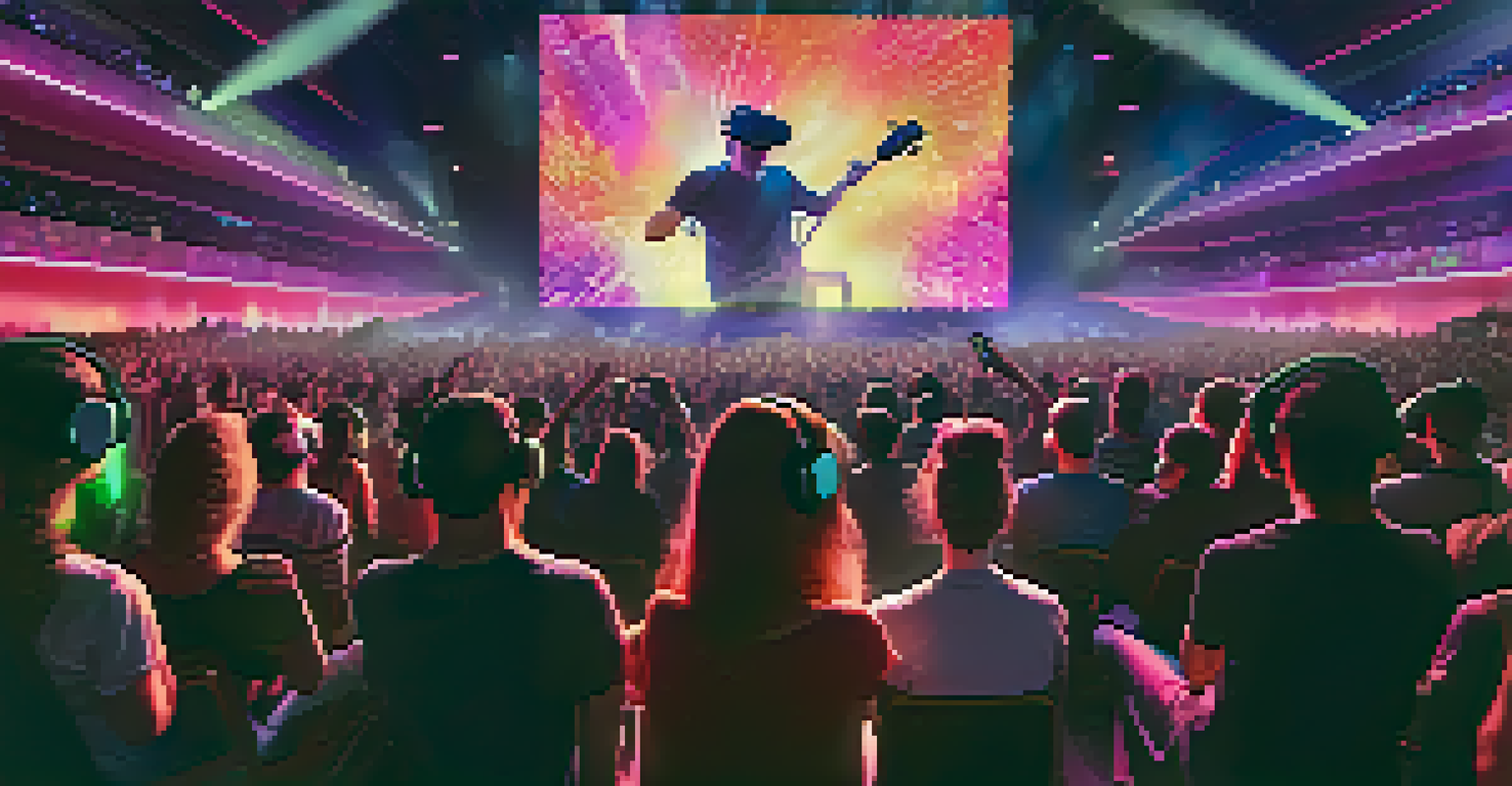Future Trends: NFTs and Digital Twins Shaping Tomorrow’s Tech

Understanding NFTs: Beyond Digital Art and Collectibles
Non-fungible tokens, or NFTs, have exploded in popularity, primarily known for transforming the art world. But their utility extends far beyond just digital art and collectibles. NFTs represent ownership of unique items or assets on the blockchain, making them perfect for everything from music to virtual real estate.
The future is already here — it's just not very evenly distributed.
Imagine owning a piece of virtual land in a video game or an exclusive music track from your favorite artist. Each of these can be tied to an NFT, providing a way to authenticate ownership and provenance. As industries begin to grasp the potential of NFTs, we’re seeing them apply this technology in innovative ways, enhancing how we perceive ownership and value.
In sectors like gaming and fashion, NFTs are creating new revenue streams and engagement opportunities. Users can buy, sell, or trade these unique assets, fostering a vibrant marketplace where creativity and technology intersect.
Digital Twins: A Virtual Replica of the Real World
Digital twins are virtual replicas of physical objects or systems, enabling real-time monitoring and analysis. Think of it like having a virtual version of your car that tracks its performance and maintenance needs. This technology leverages data from sensors to create a dynamic model that evolves based on real-world changes.

Industries such as manufacturing and healthcare benefit immensely from digital twins. For instance, a digital twin of a factory can optimize production processes by simulating different scenarios. This proactive approach can save time and resources, making operations more efficient and responsive.
NFTs Expand Beyond Art and Collectibles
NFTs are revolutionizing various industries by representing ownership of unique digital assets, from music to virtual land.
As we move into an increasingly data-driven world, the potential applications for digital twins are limitless. From urban planning to personalized medicine, they offer a way to experiment and innovate without the risks associated with real-world changes.
The Intersection of NFTs and Digital Twins
While NFTs and digital twins may seem distinct, they share a common thread: both leverage digital assets to enhance our understanding and interaction with the physical world. For example, a digital twin of a piece of machinery could be linked to an NFT representing its ownership or maintenance records. This integration can streamline processes and ensure transparency.
Innovation distinguishes between a leader and a follower.
Imagine a scenario where an artist creates a digital twin of their artwork, logging every change and transaction on the blockchain as an NFT. This way, collectors can verify authenticity and track the artwork’s history seamlessly. It opens new pathways for appreciation and value in the art community.
The potential for combining these technologies is vast. As businesses explore how to use NFTs to represent ownership and digital twins for analysis, we could see innovative solutions that reshape industries and consumer experiences.
Real-World Applications of NFTs and Digital Twins
The integration of NFTs and digital twins is already making waves in various sectors. In real estate, for instance, a digital twin of a property can be linked to an NFT that represents ownership, making transactions faster and more secure. This approach minimizes paperwork and enhances the buyer's confidence with verified data.
In the gaming industry, digital twins of characters or items can be associated with NFTs, allowing players to trade or sell their assets securely. This adds value to in-game items, creating a robust economy where players feel more invested in their virtual experiences.
Digital Twins Enhance Real-World Systems
Digital twins create virtual replicas of physical objects, allowing for real-time monitoring and optimization across sectors like manufacturing and healthcare.
Furthermore, brands in fashion are beginning to utilize these technologies to create virtual fashion shows. Digital twins of clothing items can be sold as NFTs, merging the physical and digital realms in a way that captivates audiences and expands market reach.
Challenges and Opportunities in Adoption
Despite the promising potential of NFTs and digital twins, challenges remain in their widespread adoption. Issues like environmental concerns related to blockchain technology and the complexity of integrating these systems into existing infrastructures can slow progress. However, addressing these challenges opens up new opportunities for innovation and sustainability.
For instance, many blockchain platforms are now focusing on reducing energy consumption, making NFTs more environmentally friendly. Companies are exploring ways to create more efficient digital twins that require less computational power, thus allowing broader access without compromising performance.
As organizations navigate these challenges, they will also discover a wealth of opportunities to innovate. By embracing these technologies, businesses can not only enhance their operations but also create unique customer experiences that set them apart in a competitive landscape.
The Future of NFTs and Digital Twins in Everyday Life
Looking ahead, NFTs and digital twins are poised to become integral parts of our everyday lives. Imagine attending a concert where your ticket is an NFT, granting you access to an exclusive digital twin experience of the event. This could revolutionize how we engage with entertainment and create lasting memories.
In education, digital twins of historical artifacts could be created, allowing students to explore and interact with these objects in ways previously unimaginable. Coupled with NFTs that represent ownership of educational content, this could transform learning into a more immersive experience.
Combining NFTs and Digital Twins
Integrating NFTs with digital twins can streamline processes and enhance transparency, offering innovative solutions across multiple industries.
As these technologies continue to evolve, they will shape how we perceive and interact with the world around us, making our experiences richer and more personalized. The future is bright for NFTs and digital twins, and we are just beginning to scratch the surface of their potential.
Conclusion: Embracing the Change
As we stand on the brink of a technological revolution, it’s essential to embrace the changes that NFTs and digital twins bring to the table. These innovations not only enhance our understanding of ownership and value but also drive efficiency and creativity across industries. The key is to remain open to exploring how these technologies can be integrated into our lives.
By investing in education and awareness around NFTs and digital twins, individuals and businesses alike can unlock new possibilities. Whether it’s through creating unique digital assets or optimizing processes with digital twins, the potential for growth is enormous.

As we look to the future, remember that adaptability is crucial. Embracing NFTs and digital twins will not just change the way we interact with technology; it will redefine our relationship with the digital and physical worlds, paving the way for a more interconnected and innovative tomorrow.